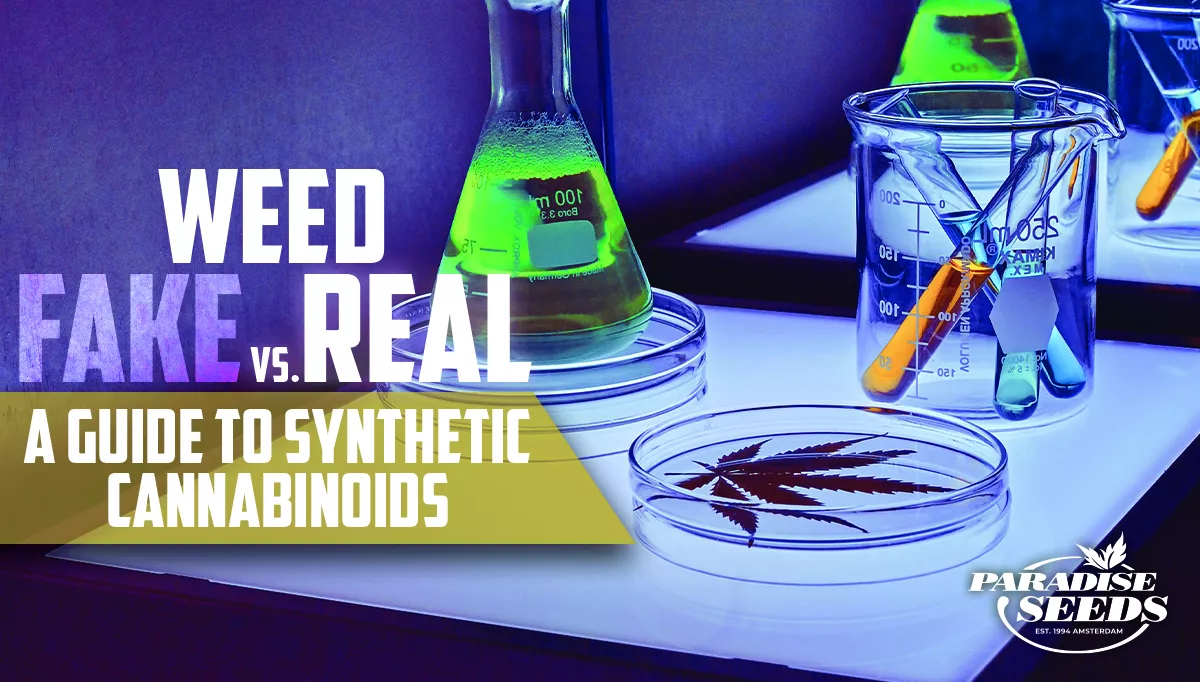When is cannabis not cannabis? It might seem like a trick question but the issue of synthetic cannabinoids has been getting more attention in recent years. If reports are to be believed, the line between a product such as Spice (which also goes by many other names including K2 and Blaze) and cannabis are becoming increasingly blurred with the main source of contamination occurring at street deal level.
We have written about the dangers of contaminated weed before, but this is a whole different level. Earlier this year, a special investigation by Vice stepped into the world of a German dealer who alleged that much of the weed being marketed as Haze in the country has been treated with synthetic cannabinoids (he refers to JWH and AB-CHIMINACA).
JWH is one of a handful of synthetic cannabinoid group structures which is associated with smoking substances such as Spice. Heavily disguised, the dealer known as ‘Banks’ tells viewers; “You’re all chemical junkies without knowing it.” He goes on to claim that this doctored weed promotes physical addiction in a way that real cannabis does not.
Anecdotal stories from the UK also allege that street deals are sometimes ‘dusted’ with Spice in order to increase the potency and profitability of poor quality cannabis. News reports have also highlighted the issue of fake cannabis vape oils, containing synthetic cannabinoid ‘juice’, which have caused users to collapse.
A Brief History of Synthetic Cannabinoids
Synthetic cannabinoids have been in existence since the early 2000s and there was a time when ‘alternative cannabis’ products, such as Spice were sold openly due to lack of regulation. Laboratories in Asia – mainly in China – and Russia have been reported as being the main source for synthetic cannabinoid production.
Essentially a chemical combination which mimics THC, in the way they bind to cannabinoid receptors in the body, they come with some potentially very nasty side effects. When the products first appeared on the market and became more widely used, from the mid 2000s, they gained popularity due to their cheap price and alternative cannabis tag, often promoted as being ‘safer than cannabis’ (while displaying a ‘Not for human consumption’ label).
However, it wasn’t long before the darker side of these ‘alternative cannabis’ products became evident and users realized that they were actually a million miles away from cannabis in terms of effect. The volatility of synthetic cannabinoids can produce extreme effects in users – ranging from catatonia to aggression and violence, earning it the reputation as a zombie drug. It has been identified as a significant problem in UK prisons, where its lack of smell and ease of smuggling (including letters soaked in the substance) has made it a profitable alternative cannabis product. Synthetic cannabinoids, such as Spice, have been blamed for a rise in attacks on prison staff.
How Are Synthetic Cannabinoids Made?
Around the world many governments have introduced legislation banning the sale of synthetic cannabinoids, but often the law is way behind the product as simple changes to the formula made in the lab can evade the list of what is presently illegal. There is inevitably a significant illegal market in operation too.
Synthetic cannabinoids begin life in an underground laboratory, where the products are synthesized and produced in powder form for shipping. The powder is most often dissolved in acetone or alcohol to turn into a liquid form which is sprayed onto a leafy/herbal matter (to add value to the ‘alternative cannabis’ label), which is then bagged up and sold.
How Do I Know If My Weed Has Been Contaminated?
Because synthetic cannabinoids have no distinctive smell or taste unfortunately you won’t know until you feel the effects. The quick and easy answer is that you should try to avoid buying cannabis on the street and ideally find a supply that comes with some provenance, i.e. so you have some idea of the source. Unfortunately, while cannabis remains illegal in many countries, this is a conversation that will not be had in the mainstream where, in the interests of public health, it really needs to be.


